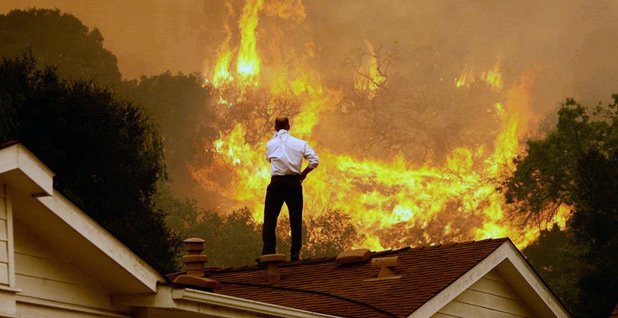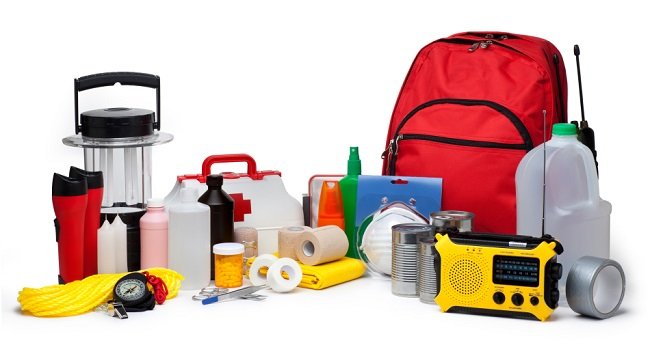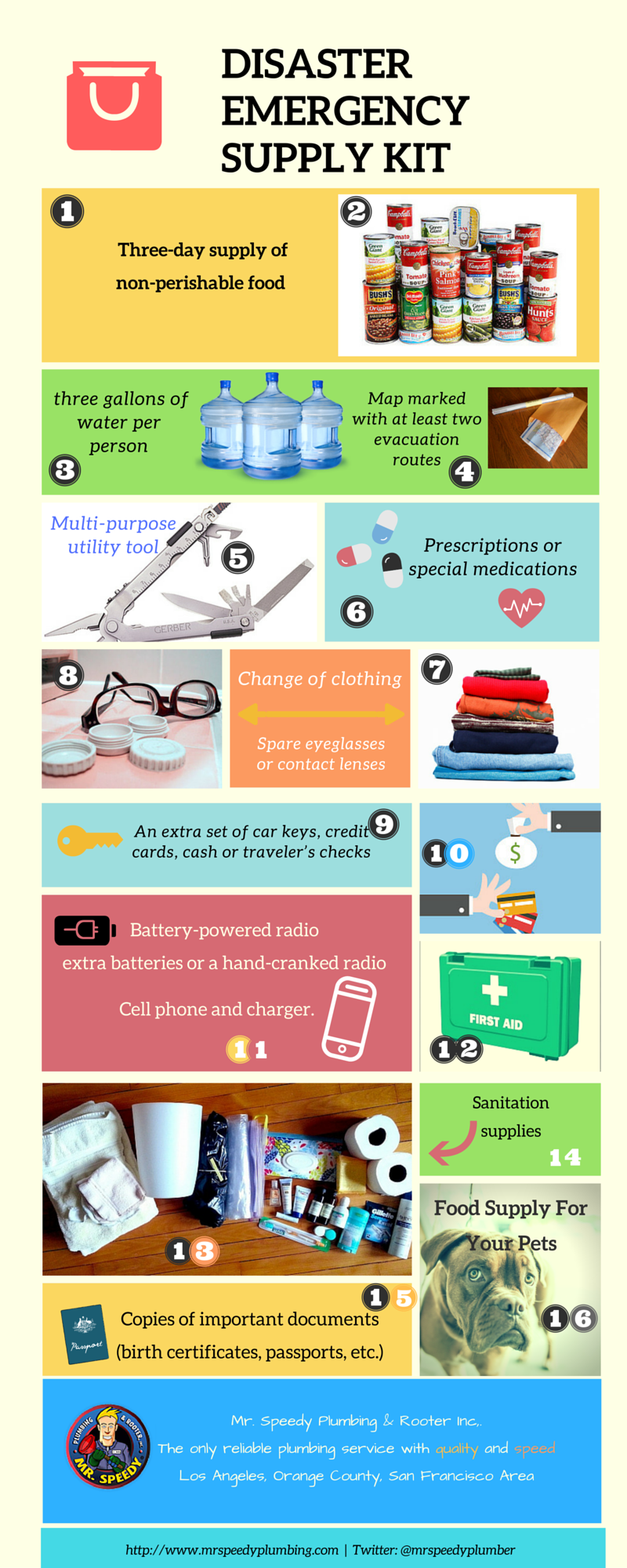The wildfire season in the Western United States started early this year. It’s partly because the last rainy season was good, so there is now a build up of material to burn. As this vegetation gets drier over the summer, we are seeing a record year for wildfires. You need to prepare a home emergency kit and a wildfire evacuation plan for your family.
As of this writing, there are dozens of active wildfires burning in the USA, according to the National Wildfire Coordinating Group. The largest fires have burned hundreds of thousands of acres, new evacuations are ordered every day, and hundreds of homes have been lost. Cadaver dogs have been brought in. The American Red Cross has set up shelters, and many deputies are being deployed to the fire-devastated areas to protect against possible looting.
So Is Evacuation Mandatory?
You should know that California law (Penal Code 409.5) authorizes law enforcement officers to restrict access to any area where a menace to public health or safety exists due to a calamity such as flood, storm, fire, earthquake, explosion, accident or other disaster. Refusal to comply is a misdemeanor.
So what must households do to prepare for wildfires and other natural disasters that might require evacuation?

Hopefully, you will have prepared a plan to implement in case of an emergency. It’s all about preparation. You can’t put together an emergency plan at the last minute. Every home should have an emergency supply kit and an evacuation plan. These should be prepared well in advance of any emergency so they will be ready if and when a crisis occurs.
Take Action on First Notice of Wildfire:
As soon as a wildfire develops anywhere near your home, you must take immediate action.

1. Gather each family member’s Emergency Supply Kit and place them in your car.
2. Locate your evacuation plan and keep it on your person.
3. Cover yourself and your family members: wear a long-sleeved shirt, long pants, sturdy shoes, a bandanna to cover your face, hat, and goggles or glasses. The Red Cross advises people to wear 100% cotton clothing in these circumstances.
4. Locate children and pets and restrict them to one room. Do not let children or pets outside. If a child or a pet has wandered away, do what you have to do to locate them and bring them inside.
The Emergency Supply Kit
Every home should have an emergency supply kit prepared for each family member long before a wildfire or other disaster occurs. Keep these kits where you can find them in an emergency, and take them with you when you have to evacuate. You should plan to be away from your home for an extended period of time.
Each person in your family should have their own emergency supply kit. And each kit should be customized: grandpa’s kit must contain his heart medication, the children’s kits should include any medicines they take plus some treats like cookies and candies. Your pet’s emergency kit should contain whatever medication/s your pet/s need, plus some treats for the pet/s.
The best place to store an emergency kit is in a backpack, which can be easily carried. Do not put your food and water in these backpacks: store your food and water in a tub or a chest on wheels, making it easier to transport.
Each person in your family needs their own emergency supply kit. And the head of your household should carry a master emergency supply kit.
So what should be in these emergency supply kits?

1. The Master Emergency Supply Kit.
- Map marked with at least two evacuation routes
- An extra set of car keys, credit cards, cash or traveler’s checks
- Copies of important documents (birth certificates, passports, Social Security cards, etc.)
- Cash – several hundred dollars if possible.
- Easily carried valuables. These may include your laptop or tablet computer, stock certificates, bonds, checkbook, legal documents (eg any power of attorney you may have) and other valuables that will be difficult to replace in a hurry.
- Family photos and other irreplaceable items (eg military service medals, college degrees & professional certifications, your coin/stamp collection etc)
- Personal computer information on hard drives and disks. It is a good idea to back up all your computers once a month onto a hard drive or USB flash drive and keep these in your master emergency kit.
2. The Individual Emergency Supply Kit.
Prepare a custom emergency kit for each member of your family with the following items:
- Multi-purpose utility tool that includes a sharp blade for cutting and a can opener.
- Change of clothing – long pants, long-sleeved shirt, underwear, socks, sweater.
- Spare eyeglasses or contact lenses
- First aid kit. Include some band-aids in assorted sizes, antiseptic cream, sanitary wipes, skin moisturizing lotion, lip balm, sunscreen, hand sanitizer, multi-vitamins. Buy small sample-sized items. Be sure to insert into each kit specific prescription medicines that each person needs.
- Flashlight and extra batteries or hand-cranked flashlight.
- Battery-powered radio and extra batteries or a hand-cranked radio
- Sanitation supplies: toilet paper, feminine hygiene products, pills to treat diarrhea and constipation.
- Two-strap face masks to cover mouth and nose.
- Cell phone and charger.
- Cash – at least $100 per family member.
At the first sign of a possible evacuation, have every family member always wear sturdy, covered shoes. And have a flashlight near your bed in case you need to evacuate suddenly at night.
3. Your Food and Water.
Pack a three-day supply of non-perishable food and three gallons of water for each member of your family. Canned food keeps the best. Buy things that your family likes to eat normally. Include things like cookies and candies for the kids. Don’t forget food, water and treats for each of your pets.
Tip:
Every container of food and water has an expiry date. Once you build your master food collection, you should consume the stored food and water every few months and replace it with fresh supplies.
Develop Your Action Plan
Know Where You Are Going to Go
Have a safe destination planned. It should be a low-risk area, such as a well-prepared friend’s or relative’s house, an evacuation center, motel, etc. As soon the Red Cross sets up a shelter, find out where it is located and how to get there. These shelters provide food, shelter, medical attention, and emotional comfort.
Plan How You Are Going to Get There
You should plan plan several different travel route options in case one route is blocked by the fire, by emergency vehicles and equipment, or by other evacuees.
Know What to Take When You Evacuate
Assemble your emergency supply kit long before a wildfire or other disaster occurs. Plan to be away from your home for at least three days. Don’t forget to plan for your pets or livestock as well.
Discuss Your Evacuation and Reunion Plan With Your Family.
Every member of your family should be familiar with your evacuation plan and what route/s your are planning to evacuate by. Have a plan to reunite with family members should they become separated from the rest of the family or if a family member is not home when the family evacuates.
Tip: As soon as you get to your destination, locate the nearest Red Cross shelter. The Red cross always sets up shelters when people have to be evacuated after natural disasters like wildfires and earthquakes. These shelters provide food, water, medical assistance, shelter and emotional support. Even if you are not staying at the shelter, you can still obtain these items by going there.
Preparing to Evacuate
Once you have been informed – either by authorities or through radio/TV – that you will have to evacuate, perform these steps to prepare your home, your family and your vehicle for evacuation.
Inside the Home
- Shut all windows and doors, but leave them all unlocked.
- Remove flammable window shades and curtains. Close metal shutters.
- Move flammable furniture to the center of the room, away from windows and doors.
- Shut off gas at the meter. Every homeowner should know how to turn off the gas main. If you don’t know how to shut off the gas, you are not prepared. Also be sure to extinguish any pilot lights.
- Leave your house lights on so firefighters can see your house under smoky conditions.
- Shut off the air conditioning and close any vents that you can.
Outside the Home
Hose down your roof, the sides of your house, and as much of the land surrounding your home as possible – especially where there is a lot of dry brush present.
Gather up flammable items from the exterior of the house and bring them inside (patio furniture, children’s toys, door mats, trash cans, etc.) If the fire actually comes very close to your house, you don’t want to give the fire any more fuel. If you have a pool, place these items in the pool.
Turn off propane tanks and move propane BBQ appliances away from structures.
Connect garden hoses to outside water valves or spigots for use by firefighters. Fill water buckets and place them around the house. Many people hose down their roof and the area surrounding the house. This can help deter most fires but the biggest ones.
Stand a ladder against the side of the house. Firefighters may need it to get up onto your roof.
Don’t leave sprinklers on or water running – they can affect critical water pressure. If you have sprinklers or a dishwasher on a timer, make sure you turn off the timers so they don’t start hogging water while firefighters need the water to fight the fire.
Leave exterior lights on so your home is visible to firefighters in the smoke or darkness of night.
Place each family member’s Emergency Supply Kit in your vehicle. Make sure each family member knows exactly where his/her kit is.
Back your car into the driveway with vehicle loaded and all doors and windows closed. Unlock each door in your car. Carry your car keys with you.
Seal your attic and ground vents with pre-cut plywood or commercial seals.
Monitor your property and the fire situation. Don’t wait for an evacuation order if you feel threatened and need to leave.
Check on neighbors and make sure they are preparing to leave.
Animals
Locate your pets and keep them nearby.
If you have farm animals, prepare your farm animals for transport and think about moving them to a safe location early.
When to Evacuate
Leave as soon as evacuation is recommended by fire officials to avoid being caught in fire, smoke or road congestion. Don’t wait to be ordered by authorities to leave. Evacuating early also helps firefighters keep roads clear of congestion, and lets them move more freely to do their job. In an intense wildfire, they may not have time to knock on every door. If you are advised to leave, don’t hesitate!
• Officials will determine the areas to be evacuated and escape routes to use depending upon the fire’s location, behavior, winds, terrain, etc.
• Law enforcement agencies are typically responsible for enforcing an evacuation order. Follow their directions promptly.
• You will be advised of potential evacuations as early as possible. You must take the initiative to stay informed and aware. Listen to your radio/TV for announcements from law enforcement and emergency personnel.
• You may be directed to temporary assembly areas to await transfer to a safe location.
The terms “Voluntary” and “Mandatory” are used to describe evacuation orders. However, local jurisdictions may use other terminology such as “Precautionary” and “Immediate Threat.” These terms are used to alert you to the significance of the danger. All evacuation instructions provided by officials should be followed immediately for your safety.
What to Do If You Become Trapped
While in your vehicle: • Stay calm. • Park your vehicle in an area clear of vegetation. • Close all vehicle windows and vents. • Cover yourself with a wool or cotton blanket or jacket. • Lie on vehicle floor. • Use your cell phone to advise officials—Call 911.
While on foot: • Stay calm. • Go to an area clear of vegetation, a ditch or depression on level ground if possible. • Lie face down and cover up your body. • Use your cell phone to advise officials—Call 911.
While in your home: • Stay calm and keep your family together. • Call 911 and inform authorities of your location. • Fill sinks and tubs with cold water. • Keep doors and windows closed, but unlocked. • Stay inside your house. • Stay away from outside walls and windows.
RETURNING HOME After a Wildfire
Do not return to your home until fire officials determine it is safe. Notification that it is safe to return home will be given as soon as possible considering safety and accessibility.
When you return home:
• Be alert for downed power lines and other hazards.
• Check propane tanks, regulators, and lines before turning gas on.
• Check your home and the land around it carefully for hidden embers or smoldering fires.
Tip:
Carefully check the tress on your property: if a tree’s bark has been burned all the way around, it will not survive and should be considered dangerous.



